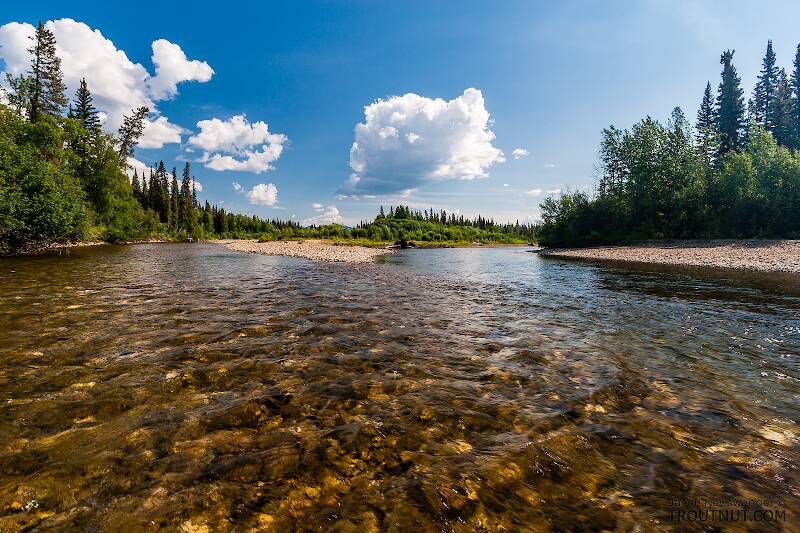
Hex Mayflies
Hexagenia limbata
The famous nocturnal Hex hatch of the Midwest (and a few other lucky locations) stirs to the surface mythically large brown trout that only touch streamers for the rest of the year.


Mayfly Species Baetisca carolina (Armored Mayflies)
Species Range
Physical description
Most physical descriptions on Troutnut are direct or slightly edited quotes from the original scientific sources describing or updating the species, although there may be errors in copying them to this website. Such descriptions aren't always definitive, because species often turn out to be more variable than the original describers observed. In some cases, only a single specimen was described! However, they are useful starting points.
Male Spinner
Wing length: 9-10 mm
Abdominal tergites of male imago light purplish brown, sternites light tan; fore wing in basal third, and hind wing entirely tinged with orange-brown; longitudinal veins brown.
Head and pronotum light tan, mesonotum paler, with a greenish tinge; scutellum tipped and margined with black; pleura light brown. Thoracic sternites yellowish tan, anterior portion of mesosternum brown. Legs greenish white; tips of claws and all joinings pale brown. Wings hyaline, somewhat iridescent. Basal third of fore wing, and all of the hind wing, tinged with orange-brown. Longitudinal veins brown; cross veins very faint, pale. Abdominal tergites 1-6 light purplish brown, darker anteriorly; sternites light tan. Tergites 7-10 brownish; sternites 8 and 9 light yellow, 6 and 7 brownish; pleural fold purplish brown. Brown lateral dots and transverse dashes on sternites 1-5. Forceps yellowish white, brown at tip; tails white, slightly brown at base, joinings in basal half light brown. Genitalia as in fig. 148.
Nymph
The nymph (see fig. 61) lacks dorsal spines on the mesonotal shield, but short lateral spines are present; the genae are produced into upcurved spines; the frontal projection is wholly wanting. From Baetisca rubescens, which likewise has the wings flushed with a reddish color, this species may be separated by its larger size and pale whitish legs; also the wings are tinged with orange rather than reddish.
Start a Discussion of Baetisca carolina
References
- Needham, James G., Jay R. Traver, and Yin-Chi Hsu. 1935. The Biology of Mayflies. Comstock Publishing Company, Inc.
Mayfly Species Baetisca carolina (Armored Mayflies)
Species Range
Resources
- NatureServe
- Integrated Taxonomic Information System
- Global Biodiversity Information Facility
- Described by Traver (1931)

